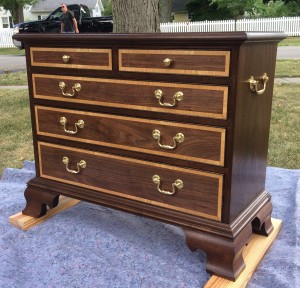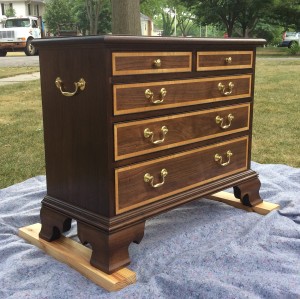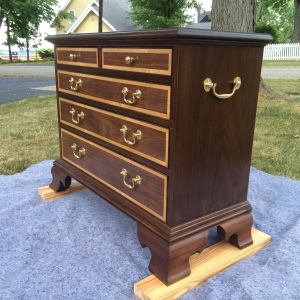I’m happy to say that the Bannister Back chair project has made its way into the work schedule, finally! It will involve a lot of turning and carving. So it should be fun, as well as challenging. The first step is to build the back assembly, which will become the datum for all other measurement.
The “balusters” are split turnings. I elected to simply screw the stock together as opposed to gluing and splitting. Using a cup live center and a multi-tooth spur allows centering right on the joint line.
Next, I prepped the rear legs for turning. I created a roller path for the steady rest just above the point at which the leg angles. It’s important to find the true center at the roller path. The counter weight was attached. These were attached with screws into the waste section of the stile. The duct tape was an extra safety precaution. It proved to be unnecessary, but it made me feel a little more secure. Safe turning speed is determined by the maximum diameter. However, minimizing vibration created by the counterweight may require a further reduction in rpm. As I have a step pulley lathe, I was forced to turn at about 680 rpm. This is very slow. Patience is the order of the day.
When I want to minimize undercut at the pommel, I’ll run a line of chalk down the center of all four surfaces. This helps me gauge when I’ve reached the maximum true round dimension.
After completing the balusters and posts, I turned the finials and rear stretcher. Stock for the crest and lower rail was planed. The bead/ogee detail on the lower rail was created using moulding planes.
Tasks for the upcoming week will include mortising the rails, tenoning the balusters and… carving the crest rail. Should be an interesting few days.



































































